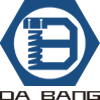A small screw, although small, is indispensable in daily life. In electronic products, mechanical products, digital products, electrical equipment, electromechanical machinery and other products. Screws are used in ships, vehicles, water conservancy projects, and even chemical experiments. This article will briefly introduce the production and processing technology (growth history) of screws, hoping to be helpful.
screw.
The Birth of the Spiral: .
Different materials are used according to the strength level of the screw: the standard parts on the market are mainly carbon steel, stainless steel and copper.
carbon steel
According to the carbon content in carbon steel raw materials, we divide it into low carbon steel, medium carbon steel, high carbon steel and alloy steel.
a. Low carbon steel: C%≤0.25% is usually called A3 steel in our country. In foreign countries, it is basically called 1008, 1015, 1018, 1022, etc. It is mainly used for products without hardness requirements such as grade 4.8 bolts, grade 4 nuts, and small screws. (Note: Drilling screws mainly use 1022 material).
b. Medium carbon steel: 0.25%
d. Alloy steel: Add alloy elements to ordinary carbon steel to improve some special properties of steel: such as 35, 40 chromium molybdenum, SCM435, 10B38. Fangsheng screws are mainly made of SCM435 Cr-Mo alloy steel, the main components are C, Si, Mn, P, S, Cr, Mo.
Made of stainless steel.
Classified by performance class.
A. The main austenite (18%Cr, 8%Ni) of 45, 50, 60, 70, 80 has good heat resistance, corrosion resistance and weldability.
B.B. A1, A2, A4 martensitic martensite 13%Cr has poor corrosion resistance, high strength and good wear resistance.
C. C1, C2, C4 ferritic stainless steel 18%Cr has better upsetting performance and better corrosion resistance than martensite.
D. The imported materials currently on the market are mainly Japanese products. SUS302, SUS304 and SUS316 are mainly divided by grade.
copper
Commonly used materials are brass, zinc-copper alloy. The market mainly uses H62, H65, H68 copper as standard parts.
Happy growing up.
Spheroidizing (softening), annealing:
1. Spheroidizing (softening) annealing countersunk head screws and hexagonal cylindrical head bolts are produced by cold heading process. The original structure of steel will directly affect the forming ability of cold heading processing.
2. For medium-carbon steel and medium-carbon alloy steel with high fastener strength, spheroidizing (softening) annealing is performed before cold heading to obtain uniform and fine spheroidized pearlite, which can better meet actual production needs.
3. Medium-carbon alloy steel wire rod adopts isothermal spheroidizing annealing. After heating, AC1+ (20-30%) is cooled in the furnace to slightly less than Ar1. The temperature is kept at about 700 degrees Celsius for a period of time, and then the furnace is cooled to about 500 degrees Celsius. Remove to air cool. The softening annealing temperature is 35\45\\ML35\SWRCH35K steel is generally 715-735 degrees Celsius.
4. During softening and annealing of medium carbon steel wire rod, the heating temperature is generally kept at the critical point of the steel, and should not be too high, otherwise three cementites will be precipitated along the grain boundary, causing cold heading cracking.
Into the community.
thread:
Bolt threads are generally cold-worked, so that the thread blank within a certain diameter range is formed into a coil (die) by friction (rolling), and the thread is formed by the pressure of the coil (rolling die). The plastic streamline in the threaded part is not cut, the strength is increased, the precision is high, and the quality is uniform, so it is widely used.
In order to produce the thread diameter of the final product, the required thread blank diameter is different, because it is affected by factors such as thread accuracy, material coating or not.
Rolling (grinding) threads refers to a processing method that uses plastic deformation to form thread teeth. It is a flat rolling board with the same pitch and profile as the threads to be machined. While extruding the cylindrical billet, the billet is rotated, and finally the tooth-shaped teeth on the rolling die are transferred to the billet to form the thread.
The common point of rolling (rubbing) thread processing is that the number of rolling should not be too many. If there are too many, the efficiency will be low, and the thread tooth surface is easy to disengage or buckle randomly. Conversely, if the number of revolutions is too small, the diameter of the thread is likely to be out of round, and the initial pressure of rolling is abnormally increased, resulting in shortened die life.
Common defects of rolled threads: surface cracks or scratches on the threaded part. Wrong deduction. Part of the line is not round. If these defects occur in large numbers, they will be discovered during the processing stage. If the quantity is small, these defects will be circulated to users if they are not noticed during the production process, causing trouble. Therefore, the key issues of processing conditions should be summarized, and these key factors should be controlled during the production process.
The life of a screw here has officially kicked off. It may be in the mobile phone, it may be in the TV, and of course it may rust silently in the corner when it is idle. The same goes for people.
Post time: Nov-23-2022
